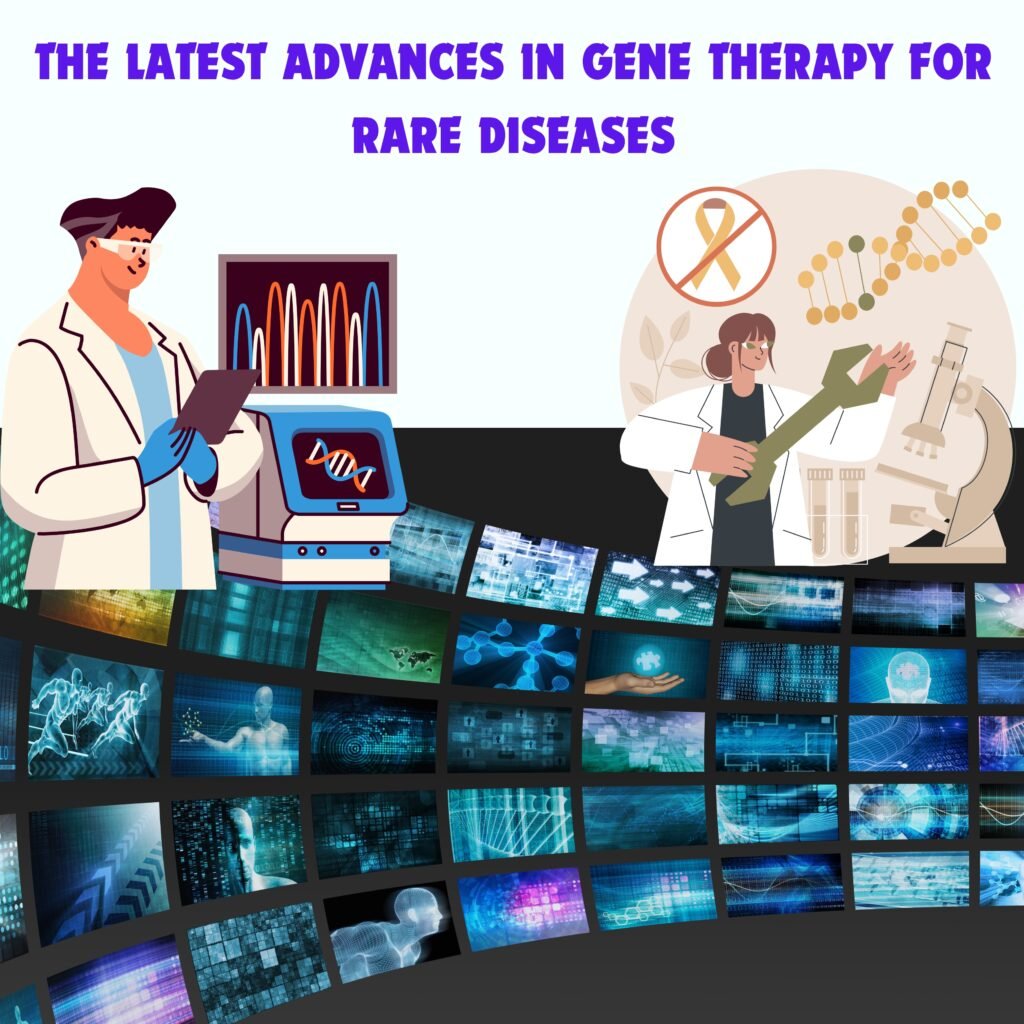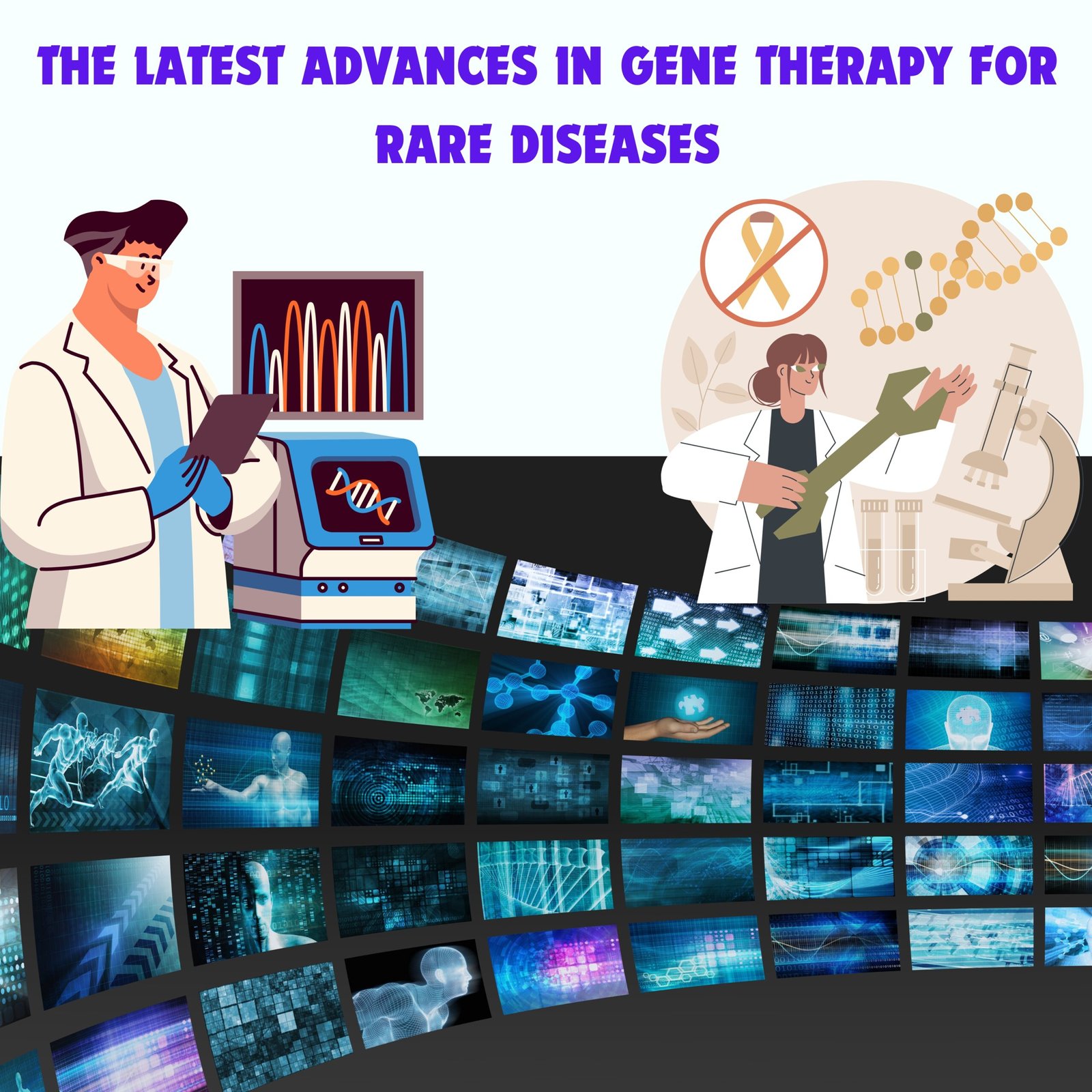Gene therapy is a promising approach to treat rare diseases that are caused by genetic defects. Gene therap involves introducing a healthy copy of a gene into the cells of a patient, or editing the faulty gene to correct its function. Gene therapy can be delivered either in vivo (directly into the patient’s body) or ex vivo (using the patient’s cells that are modified outside th body and then transplanted back).

Some of the latest advances in gene therapy for rare diseases are: –
Zolgensma®️ : This is the first gene therapy approved by the FDA and EMA for spinal muscular atrophy (SMA), a neuromuscular disorder tha causes progressive muscle weakness and paralysis.
Zolgensma®️ uses an adeno-associated virus (AAV) vector to deliver a functional copy of the SMN1 gene, which is missing or mutated in SMA patients, to the motor neurons. Zolgensma®️ has shown to improve survival and motor function in SMA patients. –
Libmeldy®️ : This is the first gene therapy approved by the EMA for metachromatic leukodystrophy (MLD), a lysosomal storage disorder that affects the nervous system and causes cognitive decline, motor impairment, and early death.
Libmeldy®️ uses a lentivirus vector to modify the patient’s own hematopoietic stem cells (HSCs) with a functional copy of the ARSA gene, which is deficient in MLD patients. Libmeldy®️ has shown to preserve cognitive and motor function in MLD patients. –
Lumevoq ®️: This is the first gene therapy approved by the EMA for Leber hereditary optic neuropathy (LHON), a mitochondrial disorder that causes vision loss. Lumevoq®️ uses an AAV vector to deliver a functional copy of the ND4 gene, which is mutated in LHON patients, to the retinal cells.
Lumevoq®️ has shown to improve visual acuity and quality of life in LHON patients. These are some examples of the breakthroughs in gene therapy for rare diseases. However, there are also many challenges and limitations in the development and delivery of gene therapy, such as safety, efficacy, durability, accessibility, and affordability. Therefore, more research and innovation are needed to overcome these hurdles and make gene therapy a widely available and effective treatment option for rare diseases.
CITATION: (1) Advances and challenges in gene therapy for rare diseases – Medical Xpress. https://medicalxpress.com/news/2023-11-advances-gene-therapy-rare-diseases.html. (2) Current and Future Prospects for Gene Therapy for Rare Genetic Diseases https://www.frontiersin.org/articles/10.3389/fnmol.2021.695937/full.
(3) The next generation of gene therapy for rare diseases forges ahead. https://www.fiercebiotech.com/biotech/next-generation-gene-therapy-for-rare-diseases-forges-ahead-as-developers-weather-hurdles.
(4) Study sheds more light on advances, challenges in gene therapy for rare. https://www.aninews.in/news/science/study-sheds-more-light-on-advances-challenges-in-gene-therapy-for-rare-diseases20231114222914/.
(5) Gene Therapy News — ScienceDaily. https://www.sciencedaily.com/news/health_medicine/gene_therapy/. (6)https://doi.org/10.3389/fnmol.2021.695937.




